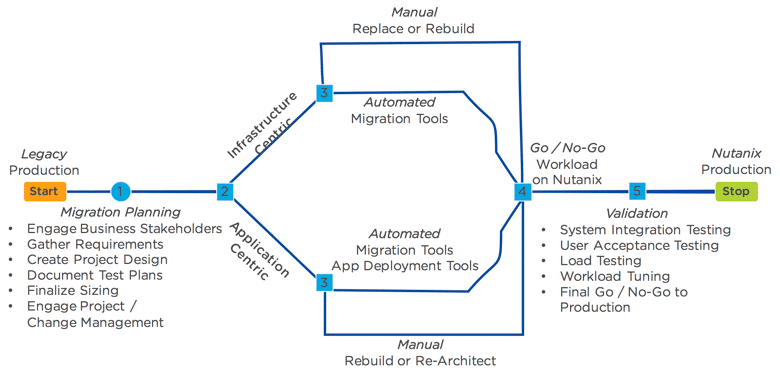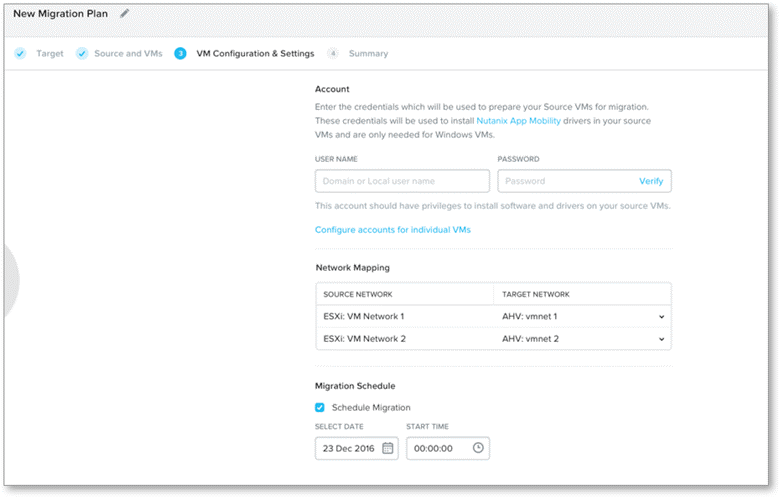Nutanix Xtract Introduces VM Migration Simplicity to Hyperconverged Infrastructures
During .Next 2017, held in Washington DC in June, Nutanix announced Xtract for VMs beta release, a key component in simplifying organizations’ Nutanix Enterprise Cloud adoption when there are existing workloads that need to be migrated.
Following three months of beta testing, and many successful Nutanix and customer migrations, we are proud to announce that Xtract for VMs 1.0 is now generally available to Nutanix customers.
Migrations versus Replacing or Rebuilding
During the IT planning phase for brownfield projects, organizations decide on how to handle existing applications and VMs/workloads, depending on whether an application-centric or infrastructure-centric approach is required. Each of these can be handled manually by replacing, rebuilding or re-architecting them, or, they can be automated using migration or application deployment tools.
Xtract for VMs radically simplifies the adoption of Nutanix Enterprise Cloud by automating the manual steps required to move VMs from a VMware ESXi source infrastructure to Nutanix AHV.
The benefits of migrating workloads in this manner are easily justified:
- VM migration projects can be considerably quicker to complete than performing manual rebuilds or sourcing and testing replacements products.
- Automating migrations frees up infrastructure admins’ time to carry out other tasks.
- Automated migrations are not prone to human error, resulting in more consistent migration results
- Migrating from ESXi to AHV frees up customers’ licensing budgets for other projects

Easy Deployment & Intuitive UI
As customers have come to expect from Nutanix, Xtract for VMs has ease of use and flexibility in mind. Xtract for VMs is deployed as a simple app, with a UI that is straightforward to navigate.
Following the initial deployment, an IT administrator needs to follow a few simple steps to initiate VM migrations:
- Register the source VMware ESXi and target Nutanix AHV clusters to be used for migrations
- Create a migration plan selecting one, or many VMs to migrate
- Add appropriate source-VM credentials to allow for VM pre-migration preparation
- Map the source-VM’s network connections to the target infrastructure’s networks
IT administrators can easily group multi-tiered or dependent applications together, enabling them to be migrated as one. Additionally, all AHV supported OSs are supported by Xtract for VMs.

Automatic management of OS preparation tasks
Migrating VMs from an ESXi virtualization layer requires preparation of the VM for the target AHV platform. This includes ensuring the VM is best configured to achieve the best performance possible. This is done by automatically injecting the required paravirtualized device drivers into the VM, such that when the VM is started on the target platform, it has everything required to deliver the best experience. By injecting the drivers at this phase eliminated manual steps during the cutover phase, and minimizes any application outage at this point.
Additionally, the necessary scripts are also injected into the VM so that the networking can be appropriately configured on the target VM once cutover. This for example ensures static IP addresses are carried over.
Fast data seeding
Once the migration phase, or data seeding has begun, a VM’s data is replicated to the target Nutanix cluster, and is kept in sync over time. The benefit of this is that customers can start the seeding process, and leave the synchronization of source to target running until the business is ready to perform the cutover process. Multiple VMs can be left in this manner, giving control and flexibility over the important cutover window.
The duration taken to migrate any particular VM will of course depend on a number of factors, from the source VM’s infrastructure, the speed of storage, its networking bandwidth and latency from source to target, as well as the size of the source VM and its associated data churn. That being said, the Xtract architecture is scalable, and can enable up to wire speed transfers if the infrastructure allows for it.
Control over cutover
When an IT admin is ready to cutover to a target VM, a small maintenance window required, however, the control over the time at which this cutover occurs provides considerable flexibility to your business. As with most OSs, there should be small maintenance windows to handle OS patches that often require a reboot, and Xtract’s cutover timeframe is potentially just a few minutes (inclusive of the time taken to shutdown the source VM).
Xtract has been architected with a simple, yet flexible UI process for the creation and execution of migration plans, with minimal manual intervention, a fast and efficient data seeding, and control over the cutover process ensuring minimal service interruption.
Xtract for VMs 1.0 is available now for download at no cost to all Nutanix customers.

